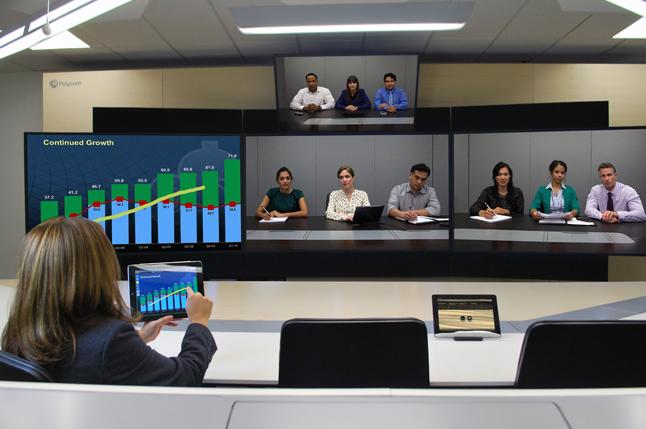
Mobile has already been an integral part of businesses with organizations betting big on its potential to take their business to next level. It’s time visual communication should move from boardroom to users’ desktops and mobile, for organizations to innovate faster by collaborating with distributed workforce, says the newly appointed managing director of Polycom, Minhaj Zia.
A survey (by Polycom) result from 5000 enterprises video end-users around the world revealed that with video collaboration: 94% reported increased efficiency and productivity, 88% reported increased impact of discussion, and 87% reported faster decision-making.
VC makes sense for today’s employees
Video collaboration is the new way of working in a mobile, social world. With distributed workforces, offices around the globe and teams constantly on the move businesses need to ensure collaboration takes place effectively.
In the first ever press conference after he joined Polycom, Minhaj emphasizes on how visual communication (VC) is becoming mission critical or enterprises especially banks and pharmaceutical companies. VC enables a bank to go for a kiosk instead of a full fledged branch. Dr Reddy’s Lab leveraged visual collaboration solution to reduce time to market and this is how they improved their bottom-line, say Minhaj.
Jewellery is another big market that is leveraging video collaboration at an accelerated pace.
Video collaboration for Tier 2, Tier 3 cities
‘We’re present in 50 Tier 2 and tier 3 cities across India with partners over there. Plus, we have a dedicated segment to cater to the needs of SMBs which contribute 15-20 percent to their overall revenues,’ says Minhaj.
When asked what drives this video collaboration, mobile and social revolution is the force behind this next gen visual collaboration amongst across enterprises, says Minhaj.
Taking VC from boardroom to users desktops
While a lot of organizations including small and medium businesses have already deployed video collaboration solutions, most of them are at boardroom level yet. It will take sometime to get to users’ mobile screen, for a couple of reasons, the top being the network and erratic connectivity.
An interesting things that Minhaj pointed out as a challenge for them is, ‘we need to put in efforts to make our products more users friendly.
Visual collaboration is the next level of mobility
Minhaj is bullish on its future with network infrastructure getting improved soon as the national broadband plan gets implemented. The 75-80 million dollar market of video collaboration growing at a CAGR of 15 percent hold much promise for a country like India with two million SMBs.
Government is also buying the promise of visual collaboration with top political parties already unleashing its power across their offices, says Minhaj.

 In
In
Add new comment